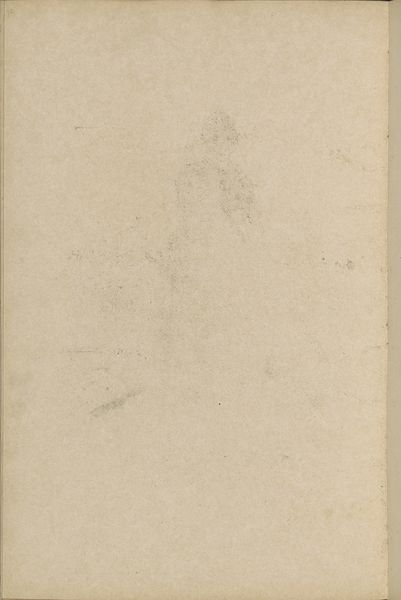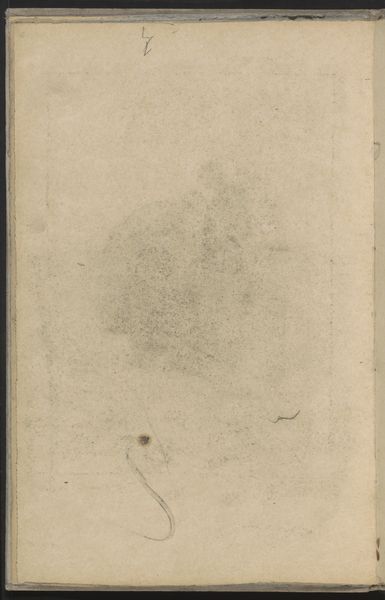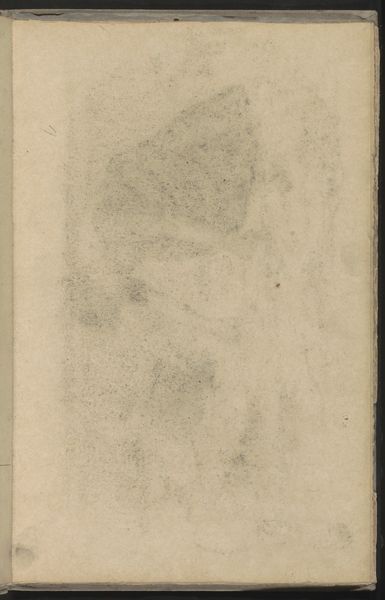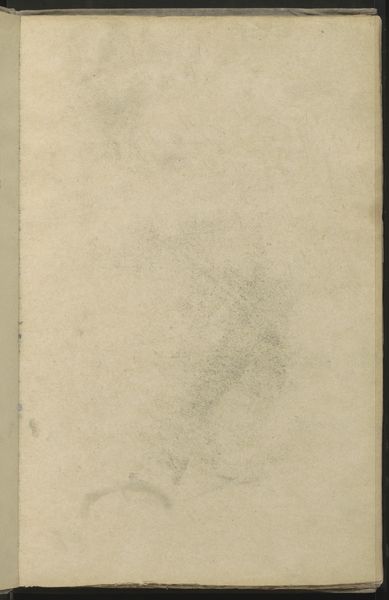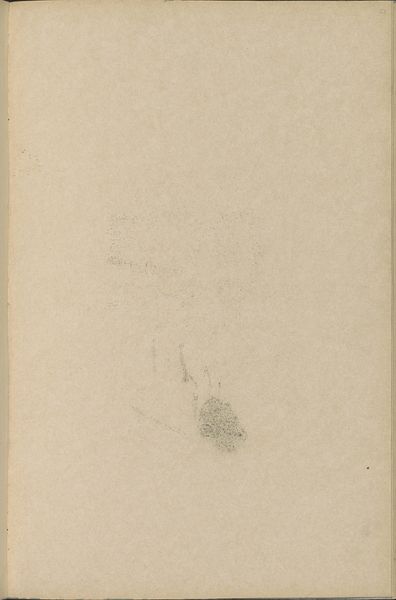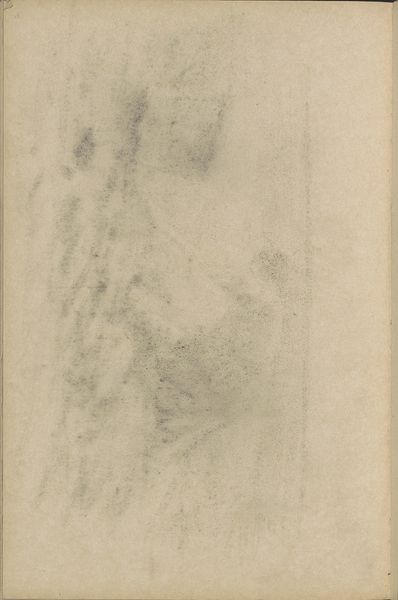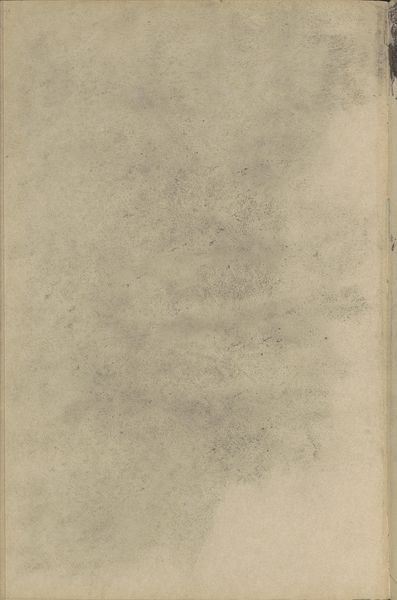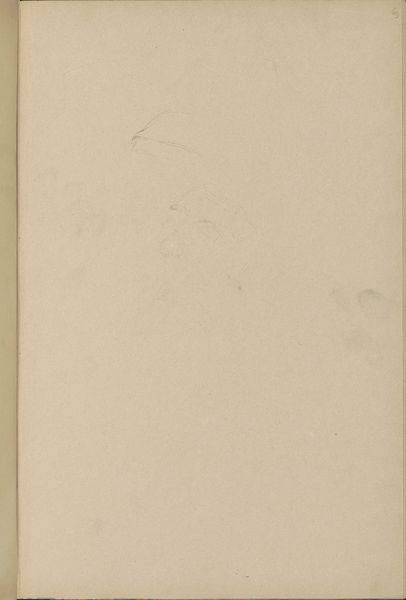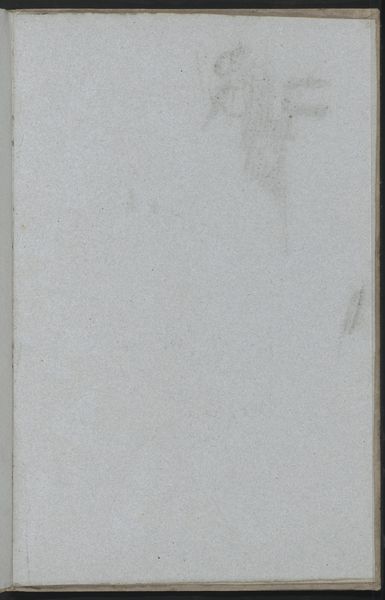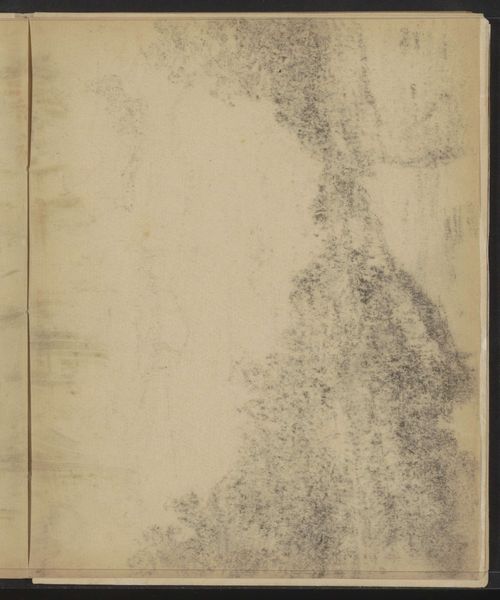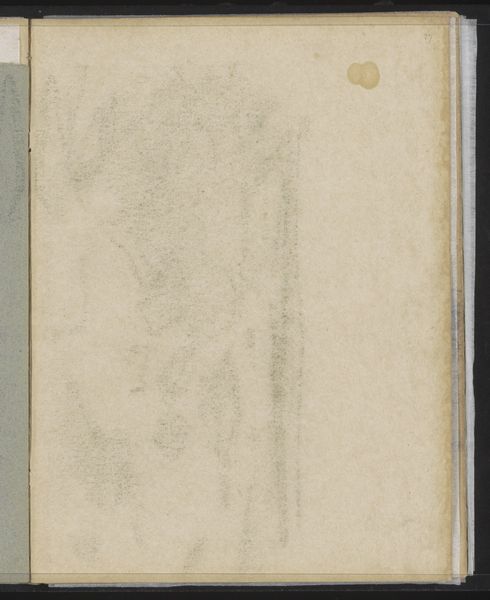
drawing, paper, pencil, graphite
#
drawing
#
impressionism
#
pencil sketch
#
landscape
#
paper
#
pencil
#
graphite
Copyright: Rijks Museum: Open Domain
Curator: This delicate pencil sketch is entitled "Abklatsch van een krijttekening," attributed to Willem Witsen and believed to have been created sometime between 1884 and 1887. Editor: My first impression is one of…ghostliness. There's a real ethereality to the barely-there rendering of, what, a copse of trees? Is it even that? Curator: Indeed, Witsen employs a graphite pencil to create an extremely subtle landscape drawing. Look closely at the marks: the faintest whispers of lines, creating a visual texture more felt than seen. Consider the overall composition—the bare minimum required to suggest space and depth. Editor: And that’s what is so interesting about it, visually. I want to read this as Witsen gesturing towards the shifting socio-political landscapes of the Netherlands during that period, a commentary on erasure of a pastoral life in the face of industrial growth, perhaps? Curator: While context undoubtedly plays a role in any interpretation, let us not overlook the power of form. Note how the off-white paper serves as an active element. The 'negative space' isn't just background; it defines the subject. It provides light and air that contrasts, for example, with a darker, richer etching. Editor: Fair enough, but I think it would be too simplistic to discuss this in terms of form alone. The fact that he chooses this technique speaks to what can't, or won’t be represented, that even a seemingly “natural” landscape bears the trace of those who lived, worked, suffered on this land. This feels relevant when the population increased alongside land clearances from industry and urbanization in the Dutch countryside during the period that the artwork was made. Curator: Perhaps. I lean towards seeing it as a masterful exercise in reduction—an attempt to capture the very essence of landscape, stripped of all ornamentation. The economy of line is almost haiku-like. Editor: Maybe both readings coexist. Witsen's careful mark-making provides an intriguing perspective through which we might observe both structural subtleties and socioeconomic commentaries. Curator: I think I'm beginning to see what you mean. It’s as much about presence as it is absence. Thank you.
Comments
No comments
Be the first to comment and join the conversation on the ultimate creative platform.
